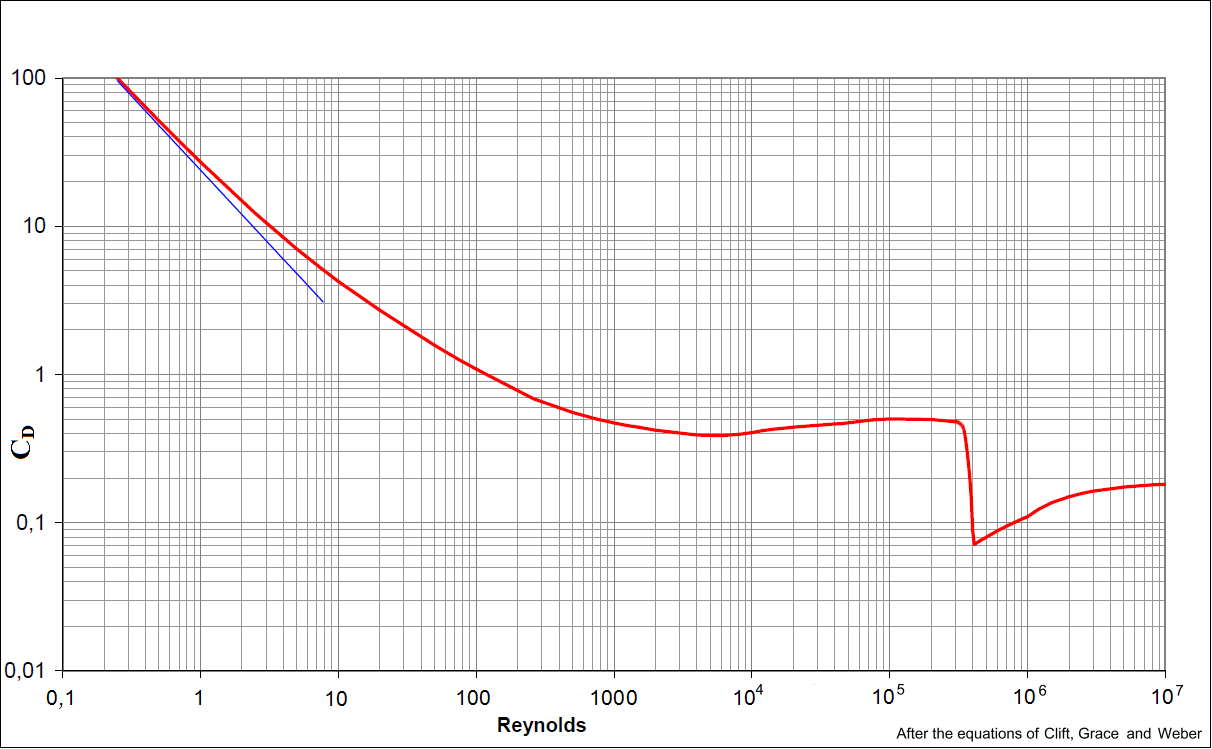3.3 Terminal velocity: exercise 2 (example)
Course subject(s)
3. Drag force
AIR BUBBLE IN GLUE
A spherical air bubble (density ρair = 1.2 kg/m3) is slowly rising in a bottle of glue at a constant velocity, vs. The bubble has a diameter of 3 mm and rises 2.5 cm in five seconds (easy to measure!). The density of the glue is ρg= 103 kg/m3. With these parameters, you can determine the viscosity of the glue.
Start with a sketch of the situation!

This is the same graph that we used in the previous exercise about spheres dropped from the roof of a skyscraper, with which we will now attempt to determine the Reynolds number once we know the drag coefficient.


The Basics of transport phenomena by TU Delft OpenCourseWare is licensed under a Creative Commons Attribution-NonCommercial-ShareAlike 4.0 International License.
Based on a work at https://ocw.tudelft.nl/courses/basics-transport-phenomena/.



